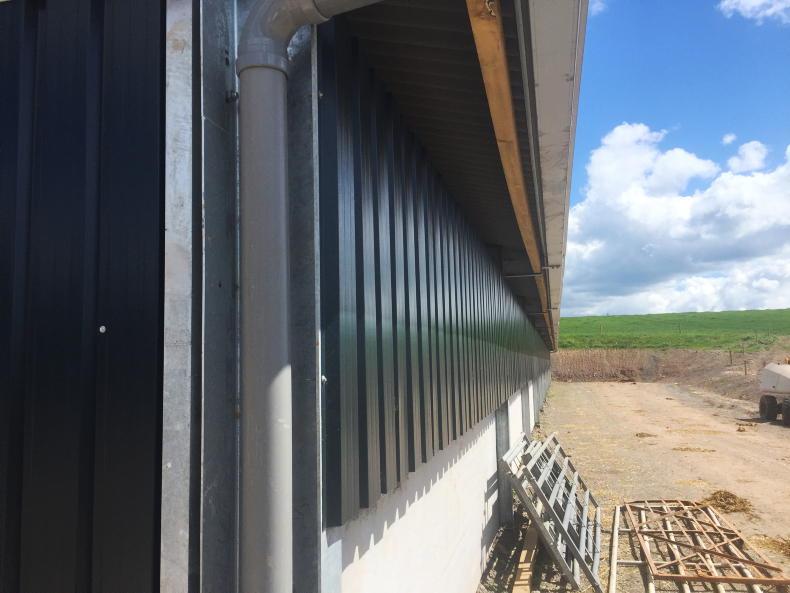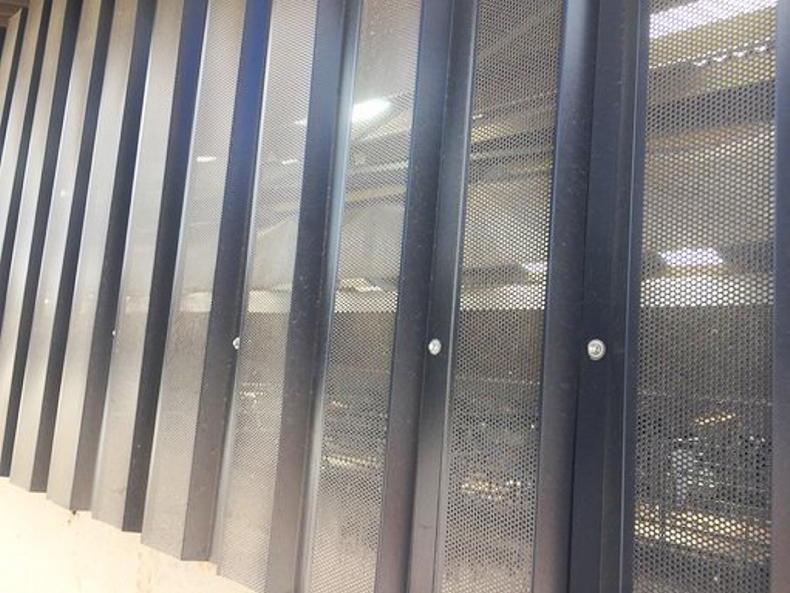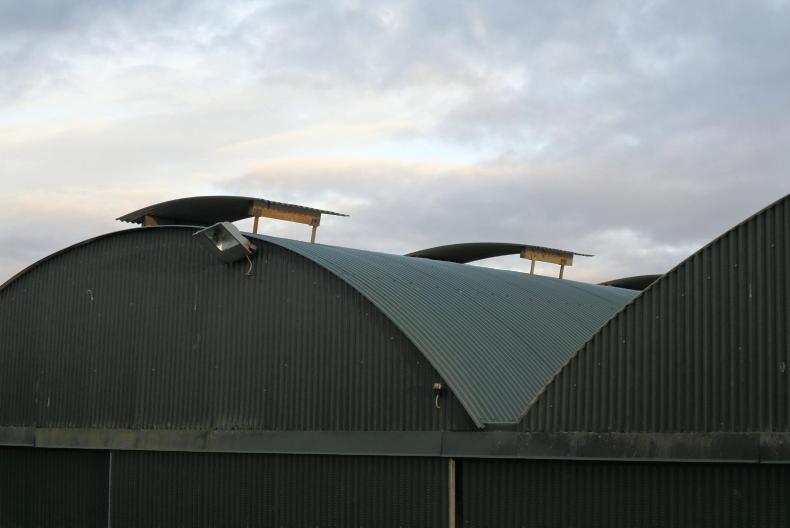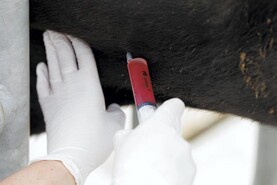There are few farming events as demoralising as having to deal with sick calves. The time taken to treat them, the costs involved in treatment and the knock-on effects of poor thrive and mortality are relatively small in comparison to the mental turmoil of seeing calves suffer.
So, avoiding disease is the order of the day when it comes to calf care. However, that’s not always possible and with even the best care in the world a disease outbreak can occur. When that happens, the following steps are critically important:
1 Contain the problem by isolating any sick calves and avoid transferring infection from sick calves to healthy calves. This means sick calves should not share the same airspace, bedding or feeding equipment as healthy calves. Sick calves, particularly where infectious scours like rotavirus or cryptosporidium are present, will spread infection to healthy calves and the problems then multiply. The farmer can often be the conduit of infection. Wear clean clothes when feeding calves and if there are sick calves to be fed, feed them last and then thoroughly wash and disinfect clothing and hands before carrying out other duties. Disinfect footwear between sheds.
2 Make sure sick calves are hydrated. Dehydration is the main cause of mortality in most incidences of calf scour. The temptation is to cut back on milk when calves have scour but this is not the right thing to do as it is actually additional fluids that the calf needs during this time. Feeding two or three feeds per day of electrolytes in between the main milk feeds will help to ensure that the fluids being lost through the scour are being replaced. Remember, the scour occurs when the calf’s gut is being attacked by a virus or parasite. Damage to the gut prevents the nutrients in the milk from being absorbed properly and so it passes through the calf, hence very loose and watery faeces are the main symptoms of scour. Sunken eyes and tight skin indicate dehydration.
3 Seek veterinary advice early. Don’t leave it on the long finger for a vet callout when it comes to sick calves. Hoping that it goes away isn’t a good strategy. While veterinary intervention is limited when it comes to scours (antibiotics won’t cure scour) a vet will be able to identify the cause of the scour and then introduce a plan to prevent the infection from spreading to other calves. Most vets now have scour test kits which can help to identify the cause of the scour while out on the farm.
4 Boost immunity to prevent pneumonia. Pneumonia can be caused by a virus or bacteria. A typical case will see a virus attack the calf’s immune system, leaving the door open for bacteria to attack the lungs.
According to Animal Health Ireland, the viruses and bacteria that cause pneumonia are also present on healthy calves, which suggests that calves that get pneumonia have less immunity to the disease.
Making sure that calves get enough colostrum at birth, are reared in well-bedded sheds with good ventilation and are on a good feeding regime, will help to keep their immunity boosted and help to fight off pneumonia.
If pneumonia is caused by a virus, antibiotics won’t cure it, but antibiotics will help to prevent bacteria from attacking the lungs so early veterinary intervention is important. Vaccines such as the RSB PI3 vaccine can also help to prevent some forms of pneumonia.
Space and ventilation
are key factors
A question we commonly get asked is how many calves can fit in a pen. Of course, it all depends on the dimensions of the pen, but it also depends on the airspace and ventilation.
For example, a disused piggery has lots of floor space but would be an awful place to rear calves due to a lack of adequate ventilation.

Gap in side sheeting allows extra air to come in.
The experts in Teagasc and Animal Health Ireland (AHI) have worked out that a 100kg calf needs to have an outlet space in the ridge of 0.04m2 per calf.
So, if the shed accommodates 50 calves and is 14.4m long (three standard spans) the outlet ridge should be 13.8cm wide. This is to allow stale air to get out of the building.
Inlets and outlets
The inlets through which clean air enter should be two to four times the size of the outlet and divided along both side walls.
So in this case, if the inlet is to be say three times as big as the outlet the inlet needs to be 41cm in total, or just over 20cm in each side of the shed.
A 20cm gap is a substantial opening and one which would let in rain, wind and snow.
Therefore, space boarding such as Yorkshire boarding or ventilated sheeting with a high percentage of inlet is recommended.

Extra-porous vented sheeting allows more air in.
The experts say that Yorkshire boarding is the gold standard because it provides good inlet space and timber is a warmer material than steel.
Another option is to position the timber holding up the side cladding on the outside of the girder, meaning fresh air can enter the shed but wind and rain cannot.
Roof pitch
A steep roof pitch of 22° will help with ventilation because this will help to create the stack effect and push the warmer, stale air out. Hence, a piggery style shed with a flat or low roof and poor ventilation is a very bad design for a calf house.
In terms of space requirements, the recommendation is to have 2m2 per calf up to weaning age and for the majority of this space to be available for calves to lie in. According to Dr Emer Kennedy from Teagasc, space allowance or stocking density is the most important factor influencing air quality in calf sheds.

Ventilation on roofs.
Hygiene factors such as making sure calf pens are cleaned out regularly and that all feeding equipment is kept clean will help to prevent the buildup of infection and disease. Plenty of straw and plenty of scrubbing represent money and time well spent when it comes to calf rearing.
There are few farming events as demoralising as having to deal with sick calves. The time taken to treat them, the costs involved in treatment and the knock-on effects of poor thrive and mortality are relatively small in comparison to the mental turmoil of seeing calves suffer.
So, avoiding disease is the order of the day when it comes to calf care. However, that’s not always possible and with even the best care in the world a disease outbreak can occur. When that happens, the following steps are critically important:
1 Contain the problem by isolating any sick calves and avoid transferring infection from sick calves to healthy calves. This means sick calves should not share the same airspace, bedding or feeding equipment as healthy calves. Sick calves, particularly where infectious scours like rotavirus or cryptosporidium are present, will spread infection to healthy calves and the problems then multiply. The farmer can often be the conduit of infection. Wear clean clothes when feeding calves and if there are sick calves to be fed, feed them last and then thoroughly wash and disinfect clothing and hands before carrying out other duties. Disinfect footwear between sheds.
2 Make sure sick calves are hydrated. Dehydration is the main cause of mortality in most incidences of calf scour. The temptation is to cut back on milk when calves have scour but this is not the right thing to do as it is actually additional fluids that the calf needs during this time. Feeding two or three feeds per day of electrolytes in between the main milk feeds will help to ensure that the fluids being lost through the scour are being replaced. Remember, the scour occurs when the calf’s gut is being attacked by a virus or parasite. Damage to the gut prevents the nutrients in the milk from being absorbed properly and so it passes through the calf, hence very loose and watery faeces are the main symptoms of scour. Sunken eyes and tight skin indicate dehydration.
3 Seek veterinary advice early. Don’t leave it on the long finger for a vet callout when it comes to sick calves. Hoping that it goes away isn’t a good strategy. While veterinary intervention is limited when it comes to scours (antibiotics won’t cure scour) a vet will be able to identify the cause of the scour and then introduce a plan to prevent the infection from spreading to other calves. Most vets now have scour test kits which can help to identify the cause of the scour while out on the farm.
4 Boost immunity to prevent pneumonia. Pneumonia can be caused by a virus or bacteria. A typical case will see a virus attack the calf’s immune system, leaving the door open for bacteria to attack the lungs.
According to Animal Health Ireland, the viruses and bacteria that cause pneumonia are also present on healthy calves, which suggests that calves that get pneumonia have less immunity to the disease.
Making sure that calves get enough colostrum at birth, are reared in well-bedded sheds with good ventilation and are on a good feeding regime, will help to keep their immunity boosted and help to fight off pneumonia.
If pneumonia is caused by a virus, antibiotics won’t cure it, but antibiotics will help to prevent bacteria from attacking the lungs so early veterinary intervention is important. Vaccines such as the RSB PI3 vaccine can also help to prevent some forms of pneumonia.
Space and ventilation
are key factors
A question we commonly get asked is how many calves can fit in a pen. Of course, it all depends on the dimensions of the pen, but it also depends on the airspace and ventilation.
For example, a disused piggery has lots of floor space but would be an awful place to rear calves due to a lack of adequate ventilation.

Gap in side sheeting allows extra air to come in.
The experts in Teagasc and Animal Health Ireland (AHI) have worked out that a 100kg calf needs to have an outlet space in the ridge of 0.04m2 per calf.
So, if the shed accommodates 50 calves and is 14.4m long (three standard spans) the outlet ridge should be 13.8cm wide. This is to allow stale air to get out of the building.
Inlets and outlets
The inlets through which clean air enter should be two to four times the size of the outlet and divided along both side walls.
So in this case, if the inlet is to be say three times as big as the outlet the inlet needs to be 41cm in total, or just over 20cm in each side of the shed.
A 20cm gap is a substantial opening and one which would let in rain, wind and snow.
Therefore, space boarding such as Yorkshire boarding or ventilated sheeting with a high percentage of inlet is recommended.

Extra-porous vented sheeting allows more air in.
The experts say that Yorkshire boarding is the gold standard because it provides good inlet space and timber is a warmer material than steel.
Another option is to position the timber holding up the side cladding on the outside of the girder, meaning fresh air can enter the shed but wind and rain cannot.
Roof pitch
A steep roof pitch of 22° will help with ventilation because this will help to create the stack effect and push the warmer, stale air out. Hence, a piggery style shed with a flat or low roof and poor ventilation is a very bad design for a calf house.
In terms of space requirements, the recommendation is to have 2m2 per calf up to weaning age and for the majority of this space to be available for calves to lie in. According to Dr Emer Kennedy from Teagasc, space allowance or stocking density is the most important factor influencing air quality in calf sheds.

Ventilation on roofs.
Hygiene factors such as making sure calf pens are cleaned out regularly and that all feeding equipment is kept clean will help to prevent the buildup of infection and disease. Plenty of straw and plenty of scrubbing represent money and time well spent when it comes to calf rearing.









 This is a subscriber-only article
This is a subscriber-only article










SHARING OPTIONS: